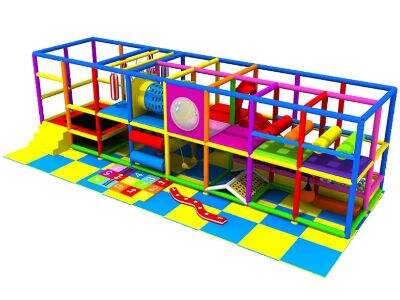Hallo vriende. Het jy al ooit 'n speelpark besoek en gevoel dat jy nie hoort nie? Dalk was sommige toerusting te moeilik om te gebruik, of was daar nie genoeg aktiwiteite nie. So ek het gedink ons moet vandag praat oor wat ons kan doen om 'n speelpark te skep wat almal insluit, met enige reeks vermoëns. Kom ons uitvind hoe ons almal kan help om ingesluit en gelukkig te wees wanneer hulle kom speel.
Speelparke vir Almal: 'n Ontwerpuitdaging
Wanneer ons 'n speelpark bou wat almal insluit, maak ons seker dat kinders met verskillende nodigheid pret kan hê. Dit kan behels om aanpasbare wipwaens met veiligheidsgordels te installeer vir kinders wat rolstoele gebruik. Dit kan dalk net beteken dat daar verskillende aktiwiteite is vir kinders met verskillende belangstelling, sodat almal iets pret kan vind om te doen. Deur te erken dat alle kinders graag wil speel, kan ons die uitrustings van die speelpark op 'n manier aanpas sodat almal voel hulle hoort daar.
Vergemaklik die Toeganklikheid van die Speelpark
Dit behels ook toegang - almal kan dit bereik en daar speel, Buite-speelplaas . Dit kan byvoorbeeld behels dat hellingbaane eerder as trappies voorsien word vir kinders wat moeilikheid ondervind met loop. Dit is ook goed om 'n voldoende aantal banke te hê vir ouers of helpers wat 'n ruskans nodig het. Harde geraas of helder ligte kan vir sekere kinders oorweldigend wees. Stilte-ruimtes en kalmerende aktiwiteite kan die speelpark meer genietbaar maak vir almal.
Skep 'n Veilige en Gerieflike Plek vir Almal
Dit is 'n veilige en insluitende plek waar niemand homself onwelkom of ongemaklik voel nie,' het Luntz gesê, en verwys na die frase in die middel van Chin se wysiging. Dit kan beteken dat daar duidelike reëls ingestel word vir hoe om op 'n vriendelike manier saam te speel. Ons kan selfs tekens in verskeie tale hê sodat kinders wat ander tale praat kan weet wat om te doen. As ons almal probeer help en die Kudde 'n positiewe en vriendelike plek maak, sal almal gelukkiger wees en ondersteuning voel wanneer hulle kom speel.
Insulitiewe Ontwerp vir Almal
Universele ontwerp gaan oor die versekering dat almal dit kan geniet, Binne-speelplaas onkragtig van die uitdagings waarmee hulle gekonfronteer word. Dit kan behels dat voetpaaie wyd genoeg gemaak word vir rolstoele of om geskutte ruimtes vir kinders wat moontlik sensitief is vir die son te verskaf. Deur te oorweeg wat kinders universeel nodig het, kan ons 'n plek skep wat werklik insluitend is.
Speel met genade om meer oor genade te leer
En die bou van medelye en genade gaan oor die help van kinders om dinge vanuit ander mense se oogpunt te sien. Dit kan behels dat jy speletjies speel wat spanwerk bevorder, of bespreek wat dit beteken om verskillende vermoëns te hê. Ons kan help dat kinders die vriendelike, sorgsame mense word wat ons almal graag in ons lewe wil hê deur geleenthede vir hulle te skep om te leer om ander se perspektiewe aan te neem. En wanneer ons vir mekaar opstaan, kan ons 'n Water-speelpark wat vriendelik is vir almal.



